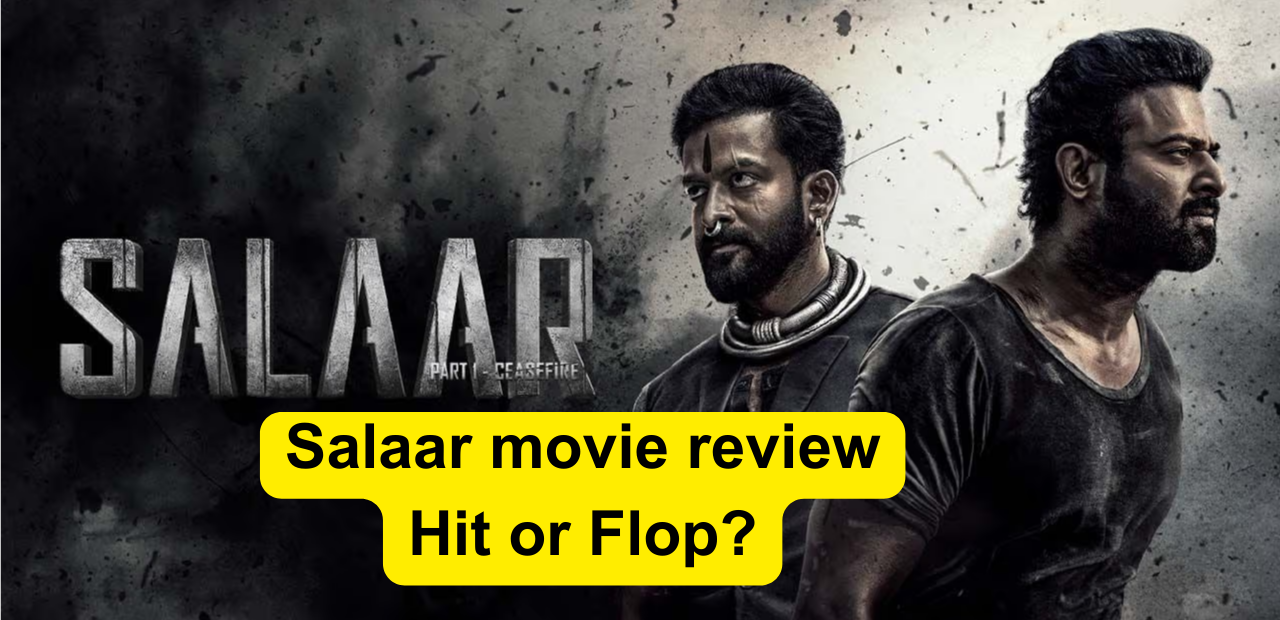Salaar: Part 1: Ceasefire Review: It takes some effort to keep up with the film’s fast-paced reveal of its plot and subplots.

The unabashedly gory Salaar: Part 1 Ceasefire is a three-hour display of the mind-numbing power of unrelenting violence. The audience is lulled into a somniferous state by the film’s copious amounts of bloodletting, which helps to make the shocks somewhat bearable.
This critic saw the Hindi dub of the Telugu epic, which is set in a less dusty environment than the two chapters of writer-director Prashanth Neel’s Kannada actioner KGF; however, it nevertheless produces heat that is just as strong and reaches roughly the same decibel levels.
The human receptacle into which the story flows is Aadhya (Shruti Haasan), who returns from the United States to a chaotic universe where some people want her dead because of an act that her father committed years ago. The nature of the narration that she receives from the man deployed to keep her safe astounds her.
That is exactly what most of us would say, too, unless we have figured out how to keep up with director Prashanth Neel’s breathless storytelling style. After hearing the intricate tale of Khansaar, a feared and lawless country divided into over 100 territories and populated by three tribes, to its bitter end, she jokes, Wait, wait, I need a drink. Daaru hai kya?
The movie rattles ahead like a runaway train, giving the spectator little time to reflect. It lives on stacking words upon words, sounds upon sounds, and images upon images without leaving even the smallest crack for light to seep into.
Salaar: Part 1’s hurtling, confusing rhythm makes sure that the audience is never left hanging; the film delivers the plot and subplots at such a fast pace that it takes effort to keep up with. However, that is not necessarily meant as a mockery.
At the end of the maximalist pulp that the film thrusts upon us, we actually push our cognitive and auditory faculties as far as we can to grasp the goings-on with varying degrees of success. The film does this by not allowing the viewer to pause and wonder what is going on. In this way, the film manages to pass off its dizzying momentum as an integral part of its design as well as its primary selling point.
Salaar: Part 1’s first part tells the story of the tough, stoic, and unbeatable Devaratha (Prabhas), his bond with his mother (Easwari Rao), and his friendship with his friend from twenty-five years prior, Varadha Raja Mannar (Prithviraj Sukumaran), who is the son of Raja Mannar’s second wife and the current Khansaar ruler (Jagapathi Babu).
The Salaar, which lasts for roughly ninety minutes, sets the scene for Deva’s dramatic entrance in Khansaar, a principality that dates back a millennium. In Khansaar, the reigning Mannar tribe is engaged in a deadly struggle for succession with the Shouraangya and Ghaniyaar tribes for the throne that Varadha’s father formerly held.
After years apart, Varadha and Deva finally reunite as problems in Khansaar spiral out of control and the threat of a palace revolt looms over the ruling class. Varadha knows that his friend, who has been away for a long time, is a fierce fighter, so he asks Deva for assistance.
It was at his mother’s instigation that he resolved never to fight again; once the sluice gates are thrown open, it is impossible to stop Deva. In one pivotal scene in the first half, the reluctant Deva swings into action to save Aradhya from a band of vicious goons.
Any threat to his childhood friend Varadha makes him go crazy; he becomes particularly aggressive when a girl is in danger. A character remarks that he recognizes his mother in every damsel who is threatened by males.
He bulldozes into situations where a lot of blood is spilled amid impalements, dismemberments, and decapitations. He is head and shoulders above any enemy who gets in his way, be it with machine guns, machetes, or simply his bare fists.
Although it is not a pretty sight, the choreography gives the action a heightened performative quality. Deva enters the ring with the confidence of a prize fighter, fully aware that he will win, and this leads to a series of unsettlingly gory but oddly captivating moments.
The first portion of Salaar is set in what appears to be an extremely dark universe, with the few visible light beams never being of the continuous lighting variety. The salaar film’s visual palette is built of muted hues rather than complete splashes of vivid color.
The muted images are broken midway through the second half by the dull russet of the saris, a few colorful umbrellas, and a multicolored kite. Then, in the pivotal scenes, there is the sight of blood.
With the help of the hyper-kinetic visual effects and the intricate digital intermediate work, cinematographer Bhuvan Gowda’s camerawork and lighting create a dismal portrait with frames that are dominated by fading browns, grimy blacks, and gloomy greys, which is not all that different from how the images were in KGF.
Like in KGF, the background score and sound design accentuate the feral aspect of life in Khansaar, where the ruler feeds off the terror that his subjects and enemies inspire in him. He says, “We are all violent men; violence is in our blood,” at one point.
Not that that is all. One of Varadha’s main enemies drugges 100 men over a period of time, turning them into ferocious hounds that pounce like hyenas on anything red. One of the two protagonists predicts that Khansaar will soon turn red, either from blood flowing or leaping flames.
The main pulls of Salaar: Part 1—Ceasefire are Prabhas and Prithviraj Sukumaran’s solid star turns; the remainder of the film’s appeal is found in the allure of unrestrained excess.
